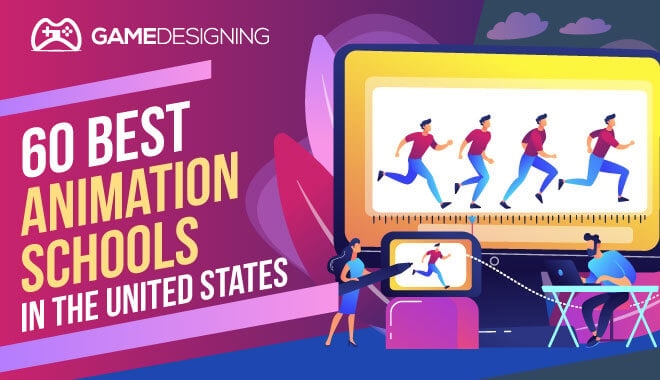 We are reader-supported. Purchases made through links on our site may earn us a commission. Learn More.
We are reader-supported. Purchases made through links on our site may earn us a commission. Learn More.
There has never been a better opportunity for aspiring animators to excel.
The digital revolution has animation companies and studio jobs popping up all over the place – but that doesn’t mean it’s easy to get a job.
Do You Need an Animation Degree?
For beginners, it can be intimidating to be on the outside of this massive industry, not knowing how to get started.
However, (although difficult) the process is simple enough.
You need experience.
But how do you get experience, when you need experience to get hired?
The answer … a top animation school, of course.
Accredited animation colleges are a great way to get the hands-on training and experience you need to take the next step.
Benefits of attending animation school:
- An accredited degree (you can leverage)
- Hands-on experience
- Networking opportunities
- Time to grow your portfolio
- Career placement opportunities
- Access to latest software and tools
- And much more …
Additionally, most professional studios want to hire animators who can prove they’ve received training and hands-on experience with the latest technology and software programs.
Our Ranking Criteria
In addition to feedback from schools and alumni, we rely on public data sources to determine our school rankings (read more). These data sources include:
- US Dept of Education: Accreditation, diversity scores, graduation rates, student-to-faculty ratio, application acceptance rate, professor salary (relative), student housing scores, and student meal scores.
- CollegeScorecard.ed.gov: Graduate earnings, student loan burden.
- US Bureau of Labor Statistics, Glassdoor.com, Payscale.com: Salary data
- National Center for Educational Statistics: Affordability
- Center for Measuring University Performance: Faculty Awards
Find the Right Animation School for You
To help you with your college search, we’ve highlighted what we believe to be the 61 best animation schools in the U.S and the top 10 internationally.
We included a wide variety of schools, including: 4-year universities, specialty schools, flexible training programs, and accredited online degree programs.
Our Favorite Animation Colleges
California Institute of the Arts
 The California Institute of the Arts is widely renowned for its 3D animation degree. In addition to music, theatre, dance, and literary arts, they also have two different courses for animators.
The California Institute of the Arts is widely renowned for its 3D animation degree. In addition to music, theatre, dance, and literary arts, they also have two different courses for animators.
The first is a BFA in Character Animation, which is a four-year program that offers to teach you the skills you need for both traditional 2D animation as well as more modern CGI animation.
The first year of this computer animation degree covers a lot of ground in terms of drawing, storytelling through animation, and expressions, as well as a rundown on how animations are made. But after that, students will be animating sequences of dialogue with sound effects, advanced painting and illustration, and visual design.
There’s a lot to learn, and this, along side CIA’s 2D animation courses covers it all while building an animation portfolio you can proudly show off to employers once your schooling ends.
Finally, in the fourth year, computer animation college students can focus on their own interests by customizing the program with courses that suit their needs. If that wasn’t enough, there’s also a BFA and MFA of Experimental Animation program, which, while similar, offers students even more freedom to be creative.
A great choice for fans of Stop-Motion or papermation, and for students with even more avant-garde interests.
The California Institute of the Arts (CalArts), is celebrated and revered within the animation and film industries. The contributions of CalArts alumni to animation have been recognized with a number of Academy Awards.
One of the most prominent CalArts alumni to win an Oscar is Brad Bird, who won two Academy Awards for Best Animated Feature for “The Incredibles” (2005) and “Ratatouille” (2008). Pete Docter, who graduated from CalArts in 1990, won two Academy Awards for Best Animated Feature with “Up” (2010), “Inside Out” (2016), and “Soul” (2021).
It’s clear from these Oscar winners that CalArts has played a significant role in shaping the careers of talented animators and filmmakers who have created some of the most acclaimed and loved animated films in recent history.
What Makes It Great
Pioneering Education: CalArts is internationally renowned as a game-changer in the education of professional artists, emphasizing visionary creative talent unlike any other institution.
Notable Achievements: CalArts’ alumni and students have received numerous accolades, including Emmy Award nominations, Oscar nominations, and top rankings by Animation Career Review.
Inclusive Community: CalArts fosters an all-inclusive community that embraces a diversity of authentic voices, ensuring a holistic and enriching learning environment.
Ringling College of Art and Design
![]() Now here is one of few computer animation colleges with an entire catalog of programs to choose from for those interested in animation.
Now here is one of few computer animation colleges with an entire catalog of programs to choose from for those interested in animation.
First, there is the “BFA in Computer Animation”. This is often considered to be the best computer animation program in all of North America, where you can learn everything from painting to modeling, texturing, and editing.
This computer animation degree has produced talented alumni in the past, such as the creators of the award-winning “In a Heartbeat” short film. You’ll learn the ins and outs of visual development, traditional animation, and 3D animation. But that’s far from the only course available for animators.
The “BFA in Motion Design” course teaches you to do nearly every job in the animation field, such as art director or sound artist, and storyboard artists. Then there’s the “BFA in Game Art”, for animators who want to take their skills to the medium of video games.
If all of that doesn’t quite fit what you’re looking for, or you can’t decide between the programs, there is still an option–the “BA in Visual Studies”. This degree in computer animation allows you to pick and choose your own classes to make sure you’re getting a program specifically to cater to your needs.
If you’re looking to become an animator, you’ll definitely want to look into Ringling College.
Ringling College of Art and Design’s Animation program earned prestigious accolades from The Rookies in 2022.
It was ranked as the #1 Best 3D Animation School globally, and it also secured the #2 spot for Best Motion Graphics School worldwide, claiming the #1 position within the United States.
Additionally, in the realm of Game Design and Development, Ringling College ranked #3 for Production Excellence in Immersive Media, once again taking the #1 spot among U.S. schools.
These rankings underscore the program’s excellence and its pivotal role in nurturing top-tier talent in the creative arts.
What Makes It Great
Dedicated Focus on Art and Design: Ringling College is the only institution in Florida exclusively dedicated to teaching art and design, with many of its programs, including Computer Animation, Motion Design, and Game Art, ranked among the best in the nation.
State-of-the-Art Facilities: The college boasts state-of-the-art facilities equipped with cutting-edge technology, ensuring students are well-prepared for lifelong success in their respective fields.
Rich History and Legacy: Founded in 1931, Ringling College has a storied history intertwined with the famous Ringling family, evolving over the years to become a leading institution in art and design education.
Savannah College of Art and Design
 Consistently rated highly by the “Animation Career Review”, the Savannah College of Art and Design, or SCAD, is a premium choice when it comes to education in this field.
Consistently rated highly by the “Animation Career Review”, the Savannah College of Art and Design, or SCAD, is a premium choice when it comes to education in this field.
Students who apply here get access to impressive digital workstations and top-of-the-line motion capture equipment. You’ll learn rigging, motion capture, stop-motion, 2D and 3D animation techniques, and more.
The animation degrees themselves come in three levels, Bachelor of Fine Arts, Master in Animation, and Master of Fine Arts in Animation. Some of these online animation courses can actually be completed online, though you’ll be missing out on the in-house technology that SCAD offers its students, which is one of its best features.
Savannah also hosts the SCAD Animationfest, where multiple industry leaders and guest speakers come to give advice, network, and answer questions about life in the animation industry. There are even a host of majors and minors on offer, such as character, technical direction, animation, and motion media design.
In other words, animators have an entire buffet of options available, all backed by the latest technology SCAD has to offer.
What Makes It Great
Industry Recognition: SCAD’s animation program is consistently named a top animation program in the U.S. by Animation Career Review, reflecting its esteemed position in the industry.
Comprehensive Curriculum: SCAD offers a holistic approach to animation, covering 2D, 3D, stop-motion animation, digital modeling, rigging, lighting, and look development, ensuring students are well-rounded and industry-ready.
Alumni Success: Graduates from SCAD’s animation program have gone on to work with major studios such as Cartoon Network, Nickelodeon, Pixar, and Walt Disney Animation Studios, showcasing the program’s ability to produce industry-leading talent.
Rhode Island School of Design
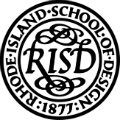 Among the first art schools in the US, Rhode Island’s School of Design is no stranger to animators. Alumni from this school have gone on to work for huge companies such as Pixar and DreamWorks Pictures.
Among the first art schools in the US, Rhode Island’s School of Design is no stranger to animators. Alumni from this school have gone on to work for huge companies such as Pixar and DreamWorks Pictures.
With that said, the main program they have on offer for Animators is the “Bachelor of Fine Arts in Film/Animation/Video” program, so what makes this school so special?
To begin with, this school has over 600 faculty members, keeping class sizes incredibly small, with 14 students being the average. That means students here can expect much more engagement with their teachers than in most schools.
Plus, don’t worry, students of RISD’s 3D animation course will have the option to choose which category to focus on, but can still learn skills in a range of genres. 2D, 3D animation and stop-motion animation are among them.
The facilities themselves have access to a wide range of experimental film techniques and materials, making it a great place for an animator to develop their own unique style.
What Makes It Great
Holistic Mission: RISD’s mission extends beyond just education. Through its college and museum, it aims to educate students and the public in the creation and appreciation of art and design, while also making lasting contributions to a global society through critical thinking, scholarship, and innovation.
Deep Disciplinary Understanding: RISD values the profound contribution of deep disciplinary knowledge, believing it to be crucial for effective interdisciplinary practice, ensuring students are well-rounded and industry-ready.
Engagement with Technology: RISD places importance on enlightened engagement with emerging technologies, coupled with critical reflection on the impact these technologies have on diverse communities and the environment.
School of Visual Arts, New York
 Working closely with the animation industry for over 40 years, students at the School of Visual Arts have a long track record of success. Part of the reason why SVA differs from other animation academies is their extremely hands-on approach in comparison to other VFX schools.
Working closely with the animation industry for over 40 years, students at the School of Visual Arts have a long track record of success. Part of the reason why SVA differs from other animation academies is their extremely hands-on approach in comparison to other VFX schools.
Through their “BFA in Animation” program, you’ll be learning to use every type of industry-standard software there is; Maya, Photoshop, Toon Boom Harmony, etc.
As a bonus, lessons are taught by professionals who work in the industry, and not just animators. You’ll learn storytelling techniques from writers, how to run an animated production from directors, and how to use 3D modeling software from special effects artists.
For those musically inclined, there is a recording studio where you can mix your own soundtracks, with complete proprietary rights over them once you’re finished.
Finally, the school offers internships and part-time employment opportunities in several independent animation studios, something that many other schools cannot do.
What Makes It Great
Unique Storytelling Approach: SVA BFA Animation emphasizes the art of storytelling, allowing students to bring their unique vision, style, and imagination to life through animation.
Comprehensive Curriculum: The program offers a robust curriculum that covers basic 2D animation skills, film theory, story development, and animation history. As students progress, they specialize in advanced techniques, mastering the filmmaking process from ideation to completion.
Real-World Experience: Courses are taught by industry professionals, ensuring students receive current industry standards and practices. Additionally, the program offers extensive extracurricular activities, including artist talks, studio visits, portfolio reviews, and an annual animation festival.
University of Southern California
 Working with the nearby School of Cinematic Arts, USC has put together a compelling BA in Animation and Digital Arts program, which combines everything you need from a liberal arts degree with a deep understanding of animation.
Working with the nearby School of Cinematic Arts, USC has put together a compelling BA in Animation and Digital Arts program, which combines everything you need from a liberal arts degree with a deep understanding of animation.
The education requirements are a bit steep; applicants will need to have eight courses in six core literacies, two in writing, and two in Global Perspectives.
USC’s 3D animation courses will introduce students to the program by learning all about drawing, animating characters, movement, pre-production, visual effects, and more, and then picking an area of concentration.
This is an area your personal program will specialize in, such as character animation, 3D computer animation, visual effects, or science visualization. Your final project will be based on your choice.
USC is a well-known and well-respected university, so despite the requirements, this 3D animation degree can be a massive boon to the resume of any animator.
What Makes It Great
Holistic Exploration of Animation: The Division offers students the opportunity to delve into every facet of art in motion, from classic character animation, visual storytelling, and performance capture to visual effects, motion graphics, and immersive media.
Industry-Standard Curriculum: The BFA and MFA programs are designed to equip students with the skills and knowledge required for the animation industry. The curriculum covers design fundamentals, storyboarding, cinematic principles, and the latest digital tools, ensuring students are industry-ready.
Notable Alumni Success: The Division boasts of alumni who have achieved significant recognition in the animation industry, with many having their work showcased in renowned festivals and some even creating their own acclaimed shows, highlighting the program’s ability to nurture top-tier talent.
University of California, Los Angeles
 This University has a secret weapon within their 2D animation course – the UCLA Animation Workshop at the School of Theater, Film, and Television.
This University has a secret weapon within their 2D animation course – the UCLA Animation Workshop at the School of Theater, Film, and Television.
This animation course has been running steadily since 1948 and has churned out countless students and arts. The Animation Workshop offers a 3-year Master of Fine Arts Degree, with each year taking a different focus.
The first year is all about learning how to make a traditional, 2D animated film. The second year incorporates the technology you need to thrive in animation media. Students will use this year to hone their 3D computer skills before making an animated short.
The third year focuses on animation when it comes to interactive media, such as video games. What’s neat about this setup, is that animators at UCLA will essentially be producing small works for their portfolio in every area of animation.
As for the facilities themselves, there are 12 animation desks straight from Disney. Two types of cranes are used for filming animations, individual workstations for students working on their thesis, editing facilities, and more.
At the animation workshop, all the technology you need to become a master animator is at your fingertips.
What Makes It Great
Cutting-Edge Facilities: The advanced Walter Lantz Digital Animation Studio introduces students to the latest CG innovations reshaping the animation landscape, ensuring they are equipped with contemporary skills and tools.
Distinguished Legacy: With a history spanning 75 years, the UCLA Animation Workshop has been at the forefront of animation education, committed to excellence in defining, expanding, and teaching the art of animation.
Carnegie Mellon University
 IDeATe (Integrative Design, Arts, And Technologies) is Carnegie Mellon’s way of combining technology and creativity.
IDeATe (Integrative Design, Arts, And Technologies) is Carnegie Mellon’s way of combining technology and creativity.
Although the hardware this 2D animation degree program offers is minor, their method of education cannot be overlooked. They have four levels, portal courses, collaborative courses, supportive courses, and micro-courses.
Portal courses help you have a basic understanding not just of the minor you’re interested in, but of all the interrelated courses that work with them. So, for example, an animator may work with game designers or directors.
Having a basic understanding of game design and directing can really help you. Passing a portal course gets you a collaborative course, which allows you to work on projects in a team. Supportive animation courses give you even more information on your specific specialization acting as a supplementary course.
Finally, micro-courses are fast-paced, intense courses that will train you on specific skills. All of these training techniques are brought to full effect during the Animation & Special Effects Minor. In this course, you’ll learn all about performance capture, and rendering, as well as several types of animation.
You can also implement what you’re learning alongside some of the other courses at IDeATe, such as video games and interactive media. As mentioned, it is only a minor course.
However, the unique process of education, and being able to collaborate with many students with different specialties, makes this a program you won’t want to sleep on.
What Makes It Great
Interdisciplinary Collaboration: IDeATe offers a unique blend of technology and creativity, providing courses and minors in areas like Game Design, Animation & Special Effects, and Media Design. These programs emphasize interdisciplinary collaboration, merging technology with artistic pursuits.
Unique Learning Experience: Students at Carnegie Mellon participate in IDeATe alongside their primary majors, allowing them to collaborate with peers from different disciplines. This approach nurtures a deeper understanding of how diverse skills can synergize to produce innovative outcomes.
Top-Ranked Departments: Carnegie Mellon boasts top-ranked departments in areas like Engineering, Fine Arts, and Computer Science. IDeATe leverages this academic excellence, offering students the opportunity to learn from highly talented faculty and collaborate with high-achieving peers.
Rochester Institute of Technology
 This institute boasts hundreds of alumni with screen credits to their name, some even working on projects as big as The Simpsons and Frozen. It’s also a huge facility with 77,000 square feet of space. But how is its animation program?
This institute boasts hundreds of alumni with screen credits to their name, some even working on projects as big as The Simpsons and Frozen. It’s also a huge facility with 77,000 square feet of space. But how is its animation program?
Through the Institute’s affiliate “School of Film and Animation”, they have two BFA courses in Film and Animation.
One of the two is actually an option that more heavily leans towards animation, while the other emphasizes film. Through the animation option, students can choose between three different programs to get a 2D animation degree, and a 3D animation degree, and even include Stop-Motion courses in their program as well.
Whatever you choose, you’ll learn about all facets of it and how it can be implemented in the modern media landscape. Film, games, VR, digital effects, and even how to animate 2D or 3D characters alongside live-action performers, like in Space Jam or Who Framed Roger Rabbit?
Most importantly, the Rochester Institute of Technology offers to help 2D animation degree students find paid coops and internships, so they can get real-world experience in an animation studio. A networking event called “Creative Industry Day” provides an excellent opportunity to get to know professional animators.
If you want even more out of your education, there is also an MFA course in Film and Animation, where you can get the maximum amount of experience and credentials in this field.
What Makes It Great
Blend of Art and Technology: The School of Film and Animation is a space where the timeless art of filmmaking converges with cutting-edge technology, allowing students to bring their unique visions to life through animation and film.
Diverse Curriculum: RIT offers a comprehensive curriculum that spans the entire creative spectrum, from 2D and 3D animation to live-action production, scriptwriting, and the science and engineering aspects of motion picture creation.
Industry-Standard Software Recognition: RIT’s School for Film and Animation is recognized as a Center of Excellence by Toon Boom Animation, a leading animation and storyboarding software company used by prominent studios like Disney, DreamWorks, and Netflix.
School | Tuition | Acceptance Rate |
California Institute of the Arts | $56,074 | 29% |
Ringling College of Art and Design | $50,500 | 65% |
Savannah College of Art and Design | $40,095 | 80% |
Rhode Island School of Design | $57,000 | 19% |
School of Visual Arts, New York | $45,000 | 71% |
University of Southern California | $66,640 | 12% |
University of California, Los Angeles | $43,012 | 11% |
Carnegie Mellon University | $62,260 | 13% |
Rochester Institute of Technology | $56,884 | 67% |
Full Sail University
 Recognizing that the advent of computers has transformed the face of media forever, this for-profit university built a robust program specializing in computer animation.
Recognizing that the advent of computers has transformed the face of media forever, this for-profit university built a robust program specializing in computer animation.
In this Bachelor’s Degree program, you’ll learn why Full Sail is considered one of the best VFX schools in the country.
This program is all about creating digital characters and environments, as well as growing an understanding of Fine Arts, modeling, and of course animating the models you create. Combining these three categories gives students an understanding of drawing life-like characters and objects with proper weight and proportions.
Then students take the next step by modeling their drawn creations using advanced computer software, before finally giving their creations fluid movement through animation.
The course can be completed on campus, or online, providing some room for students who can’t afford to travel. This program is actually fast-tracked, so you can earn a degree in half the amount of time as from most schools, though that does mean you’ll be doing more work in a shorter amount of time.
The biggest issue with this program is that it focuses more on 3D animation than on 2D and experimental animation.
Still, this course will provide everything you need to learn CGI animation.
What Makes It Great
Industry-Relevant Curriculum: Full Sail’s Computer Animation program is designed to guide students through the entire production pipeline used in professional studios. From storyboarding and sketching to modeling, character animation, and final compositing, students get a comprehensive understanding of the animation process.
Accelerated Learning: Full Sail offers an accelerated schedule, allowing students to graduate sooner and dive into the industry. This approach ensures that students are always engaged and rapidly building their skill set.
Recognized Excellence: The program has been ranked #1 on the Top 10 Animation Bachelor’s Programs in the U.S. by Animation Career Review in 2021, showcasing its commitment to quality and industry relevance.
Animation Mentor
 The strength of this online animation school, which operates 24/7, is the experienced professionals with actual industry experience teaching your courses.
The strength of this online animation school, which operates 24/7, is the experienced professionals with actual industry experience teaching your courses.
Students learn everything from character and storyboarding while mastering the latest software programs like Autodesk Maya.
What Makes It Great
Learn from the Pros: Animation Mentor is the original online animation school, founded by industry professionals from major studios. With mentors from Pixar, DreamWorks, Industrial Light & Magic, and more, students receive unparalleled insights directly from those who’ve shaped the animation industry.
Unique Mentorship Model: The school emphasizes a mentorship approach, where students are paired with industry professionals in a production-like environment. This real-world experience ensures students not only learn the craft but also understand the nuances of working in a professional setting.
Global Community & Collaboration: Animation Mentor boasts a vibrant community of passionate students from around the world. This global network allows for diverse collaboration, shared experiences, and a collective passion for animation that enriches the learning process.
Brigham Young University
 BYU’s animation major is offered in collaboration with the College of Fine Arts and Communications, the Department of Theater and Media Arts, and the Department of Visual Arts.
BYU’s animation major is offered in collaboration with the College of Fine Arts and Communications, the Department of Theater and Media Arts, and the Department of Visual Arts.
You’ll take a variety of valuable college courses such as Scripting for Animation, Screenwriting, Drawing for Animation, and 2D Animation Production during your journey toward graduation.
What Makes It Great
Consistent Excellence: BYU students consistently shine at prestigious events, having claimed top spots in both the best animation series and the best commercial categories at the College Television Awards, showcasing the quality of their work and training.
Collaborative Efforts: The creation of award-winning projects like “”Cenote”” required the collaborative skills of students from various disciplines, including animation, design, commercial music, and computer science. This interdisciplinary approach ensures a comprehensive and industry-relevant education.
The DAVE School
 What makes The DAVE School unique is that the instructors are all experienced industry artists. The curriculum simulates studio environments and pipelines and the curriculum is constantly evolving to meet industry needs based on feedback from studios such as MPC and Double Negative. (Complete DAVE School Review)
What makes The DAVE School unique is that the instructors are all experienced industry artists. The curriculum simulates studio environments and pipelines and the curriculum is constantly evolving to meet industry needs based on feedback from studios such as MPC and Double Negative. (Complete DAVE School Review)
What Makes It Great
Prime Location: Situated on the backlot of Universal Studios Florida™, DAVE School offers students a unique environment that’s closely connected to the entertainment industry, providing them with a real-world context for their studies.
State-of-the-Art Facilities: Their 18,000 square foot facility is equipped with cutting-edge resources, including interactive labs, a dedicated Virtual and Real-Time production stage, a Vicon motion capture system, and specialized 3D printing and VR/AR labs.
Extensive Access: Recognizing the dedication and passion of its students, DAVE School provides them with access to its facilities seven days a week, ensuring they have ample opportunities to hone their skills and work on their projects.
Pratt Institute
 One of the best colleges for animation, the B.F.A. in Interactive Arts gives you the option of two different areas of emphasis. One focuses on the production of 2D animation and how it can be used to develop characters and tell a story.
One of the best colleges for animation, the B.F.A. in Interactive Arts gives you the option of two different areas of emphasis. One focuses on the production of 2D animation and how it can be used to develop characters and tell a story.
The 3D Animation area of emphasis involves teaching students digital animation techniques for creating believable 3D animations.
What Makes It Great
Diverse Curriculum: The program offers a range of emphases, including 2-D Animation, 3-D Animation and Motion Arts, Art & Technology, and Interactive Arts. This diverse curriculum ensures students can specialize in their area of interest while gaining a comprehensive understanding of digital arts.
Authentic Voice Development: At Pratt, the emphasis is on developing one’s unique voice as an artist or independent animator. The program nurtures individuality, encouraging students to bring their authentic perspectives to their work.
Career-Ready Preparation: With a focus on practical skills and portfolio development, students graduate from Pratt’s Digital Arts program ready for vibrant careers in art, animation, or game arts. The program’s blend of creativity and technology equips students for the dynamic world of digital arts and animation.
New York University
 The Digital Art and Design minor at New York University briefly covers everything from technical training and visual communication to digital fabrication skills.
The Digital Art and Design minor at New York University briefly covers everything from technical training and visual communication to digital fabrication skills.
You’ll have access to the college’s digital imaging, design, and fabrication schools where they can make use of the latest software, including 3D printers, CNC routers, and laser cutters.
What Makes It Great
Comprehensive Curriculum: The Animation Area at NYU Tisch offers a diverse range of courses that cater to both animation and live-action projects. The curriculum encompasses traditional animation, 2D and 3D animation courses, storyboarding, titles, optical and digital effects, life drawing, and history and criticism classes.
Integrated Learning: The program is designed to serve the needs of all Film and TV students, ensuring that they receive a holistic education that integrates both animation and live-action techniques.
Dedicated Facilities: The Animation Area provides students with a dedicated lab equipped with state-of-the-art tools and software, ensuring they have the resources to bring their creative visions to life.
Texas A&M University
 From learning how to sketch to mastering the art of computer-generated animation, the Visualization degree program teaches you how to share your ideas, content, and messages with your audience.
From learning how to sketch to mastering the art of computer-generated animation, the Visualization degree program teaches you how to share your ideas, content, and messages with your audience.
Unique to this curriculum is the requirement that college students study abroad for a semester in a foreign studies program related to their industry of interest.
What Makes It Great
Interdisciplinary Approach: The program emphasizes visual communication through both digital and analog mediums. This interdisciplinary curriculum fosters the development of new technologies and their creative applications, ensuring graduates possess a balance of artistic insight and technical prowess.
Tailored Curriculum: The program allows students to customize their studies according to their interests and career goals. From computer animation and gaming to visual storytelling and data visualization, students can delve deep into their chosen areas of emphasis.
Industry Engagement: The program offers a Summer Industry Workshop where select students work intensively for 10 weeks to produce professional-grade short films, mentored by professionals from leading animation studios. This hands-on experience, combined with networking opportunities through advisory board meetings and the Viz Industry Fair, ensures students are well-prepared for the industry.
Ohio State University
 Both the M.F.A. and B.F.A. programs seek to give you the skills needed to use the latest and widely used technology toward the creation of art. You can learn 3D animation and modeling as well as digital imaging, internet art, holography, tactical media, moving images, interactive projects, and more.
Both the M.F.A. and B.F.A. programs seek to give you the skills needed to use the latest and widely used technology toward the creation of art. You can learn 3D animation and modeling as well as digital imaging, internet art, holography, tactical media, moving images, interactive projects, and more.
What Makes It Great
Innovative Curriculum Philosophy: The program’s curriculum is structured around a philosophy of exploration, practice, and synthesis. This three-year approach ensures students progressively build on their skills, starting with exploration in the first year, practicing and applying in the second, and culminating in a synthesis of their learning in the third year.
Interdisciplinary Opportunities: In collaboration with the Advanced Computing Center for the Arts and Design (ACCAD), students have the chance to explore new and emerging technologies, expanding the definition of digital animation. This includes areas like real-time graphics, virtual environments, game art, and interactive media installations.
Diverse Career Prospects: Graduates from the program are equipped for a wide range of careers, from CG generalists and augmented reality designers to UX strategists and virtual reality designers. This breadth of career opportunities showcases the program’s comprehensive approach to digital animation and interactive media education.
Maryland Institute College of Art
 You’ll receive hands-on experience with the latest design tools and software used by professional animators across the globe. College graduates leave the school fully capable of producing 2D and 3D animation as well as stop motion for games, movies, and more.
You’ll receive hands-on experience with the latest design tools and software used by professional animators across the globe. College graduates leave the school fully capable of producing 2D and 3D animation as well as stop motion for games, movies, and more.
What Makes It Great
State-of-the-Art Facilities & Community: Animation students at MICA benefit from state-of-the-art spaces in the Brown Center, designed specifically for design and time-based media programs. Beyond facilities, the program fosters a vibrant animation community rooted in Baltimore, leveraging partnerships with local organizations and experts across diverse fields.
Real-World Collaborations: One standout feature is the collaboration with NASA’s Goddard Space Flight Center. In the Astro-Animation course, students work alongside scientists to translate astrophysics concepts into educational animations. These projects not only provide invaluable real-world experience but also help NASA educate the public about space science.
National Recognition & Alumni Success: MICA’s Animation program is nationally recognized, with rankings that place it at the top in Maryland and among the best on the East Coast. Alumni from the program have gone on to achieve significant success.
University of Pennsylvania
![]() This Digital Media Design interdisciplinary major is a combination of computer graphics courses that teach you how to use interactive technologies for the creation of games, films, and more.
This Digital Media Design interdisciplinary major is a combination of computer graphics courses that teach you how to use interactive technologies for the creation of games, films, and more.
The school boasts graduates at top animation and gaming companies like Disney, Electronic Arts, DreamWorks, and Pixar.
What Makes It Great
Interdisciplinary Approach: The DMD program is a unique blend of computer graphics coursework within the Computer & Information Science Department and Fine Arts courses from Penn’s School of Design. This interdisciplinary nature ensures students gain both technical prowess and artistic expressivity.
Industry Relevance: Graduates from the DMD program have been employed by leading companies in the animation and tech industries, including DreamWorks Animation, Disney Animation, Pixar, Electronic Arts, Microsoft, and Google. This speaks volumes about the program’s industry relevance and the caliber of its graduates.
Engineering Focus: Unlike traditional animation majors that emphasize the use of software tools, the DMD program focuses on building and extending those tools. Students delve deep into the programming, mathematics, and technologies that underpin contemporary computer graphics, making them adept at both creating and innovating within the field.
Academy of Art University
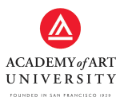 Aspiring 2D or 3D animators have plenty of degrees in animation to choose from at The Academy of Art that match their desired level and prepare them for a rewarding career.
Aspiring 2D or 3D animators have plenty of degrees in animation to choose from at The Academy of Art that match their desired level and prepare them for a rewarding career.
This dynamic program also prepares you if you prefer a role as a storyboard artist or visual effects artist. There are three areas of emphasis: Storyboarding, 3D Animation, 3D Modeling, 2D Animation, and Stop Motion, and Visual Effects.
What Makes It Great
Studio Production Environment: The Academy’s Animation & VFX school stands out with its unique Studio X—a highly collaborative, in-house, student-powered production studio. Here, students work on real projects with actual clients, gaining invaluable industry experience. Notably, Studio X students have been credited for their work on hit films like “”Fruitvale Station”” and “”Beasts of the Southern Wild.””
Diverse Learning Opportunities: The program offers a broad spectrum of areas to delve into, from 3D animation and modeling to visual effects, stop motion, and storyboarding. This comprehensive approach ensures students are well-equipped to tackle various roles in the animation industry.
Alumni Success & Industry Recognition: Graduates from the program have found employment in leading companies in the animation and tech industries. The program’s national recognition and the success of its alumni underscore the quality of education and the industry relevance of the curriculum.
Laguna College of Art and Design
 Laguna College boasts a number of degree programs that can lead to a career as an animator, with the B.F.A. in Animation being the best choice to learn 3D animation. Other options include the Game Art and Design + Digital Media programs. Graduated animators from this school are found in top studios like Pixar, DreamWorks, Obsidian Entertainment, Sony, and more.
Laguna College boasts a number of degree programs that can lead to a career as an animator, with the B.F.A. in Animation being the best choice to learn 3D animation. Other options include the Game Art and Design + Digital Media programs. Graduated animators from this school are found in top studios like Pixar, DreamWorks, Obsidian Entertainment, Sony, and more.
What Makes It Great
Holistic Animation Education: LCAD’s Animation program emphasizes not just the motion but the emotion of characters. Whether it’s through paper, pixels, or puppets, students are trained to infuse their animations with genuine thoughts and sincere emotions, ensuring their characters truly come to life on screen.
Industry-Ready Curriculum: The program is dedicated to molding exceptional storytellers who understand the entire filmmaking process. Students are equipped with traditional animation skills, complemented by proficiency in the latest digital tools. Furthermore, the faculty consists of seasoned industry professionals, ensuring students receive real-world insights.
Impressive Alumni Network: Graduates from LCAD’s Animation program have found positions in renowned companies such as Disney, DreamWorks, Pixar, Nickelodeon, and Warner Bros. This speaks volumes about the program’s industry relevance and the caliber of its alumni.
University of Central Florida
 Individuals interested in a career in animation will want to check out either the B.A. in Digital Media or the M.F.A. in Emerging Media – Digital Media. Both offer a broad curriculum that spans animation, motion graphics, digital storytelling, visual language, and more.
Individuals interested in a career in animation will want to check out either the B.A. in Digital Media or the M.F.A. in Emerging Media – Digital Media. Both offer a broad curriculum that spans animation, motion graphics, digital storytelling, visual language, and more.
Participants in the B.A. program can even choose between two specializations: Web Design and Game Design.
What Makes It Great
Emphasis on Artistic Leadership: The program, housed in the School of Visual Arts and Design (SVAD), is designed to emulate a professional studio environment. It places a principal emphasis on narrative film structure and the entrepreneurial aspects of animation, preparing students to assume artistic leadership roles in the industry.
Hands-on Experience with Real Projects: The program offers students the unique opportunity to work on real-world projects, including collaborations with NASA’s Goddard Space Flight Center. This hands-on experience ensures students are industry-ready upon graduation.
Diverse Animation Techniques: Students in the program are encouraged to explore a wide range of animation and visual effects techniques, from traditional hand-drawn and stop motion to 2D and 3D computer animation. This comprehensive approach ensures graduates are versatile and adaptable in the ever-evolving animation landscape.
Columbia College Chicago
 Among the many degree program options for future animators, the B.F.A. in Computer Animation is the top choice. The B.A. in Cinema Art + Science, which focuses on the fundamentals of film production, also has a specialization in Animation.
Among the many degree program options for future animators, the B.F.A. in Computer Animation is the top choice. The B.A. in Cinema Art + Science, which focuses on the fundamentals of film production, also has a specialization in Animation.
A minor in Animation and a B.F.A. in Traditional design classes are also available.
What Makes It Great
Real-World Animation Experience: Columbia College Chicago’s Computer Animation program is rooted in practical application. Students start animating from their very first year, and by their senior year, they collaborate with peers to create an animated film. This hands-on approach ensures students are industry-ready upon graduation.
Unique Voice and Aesthetic: The program prides itself on nurturing students to bring a unique voice and aesthetic to their work. This distinctiveness has led to the program being consistently ranked among the top animation schools in the Midwest.
Industry Exposure and Networking: The program offers unique opportunities like the “”Animation Studios in LA”” course, where senior students get a glimpse of industry life. They tour renowned animation studios such as Nickelodeon, Warner Bros., DreamWorks, Cartoon Network, and Disney, gaining invaluable insights and networking opportunities.
University of Texas at Dallas
![]() The University of Texas offers an impressive number of college degree programs useful to people looking to prepare themselves for a career at a game or digital studio. These include B.A., M.A., M.F.A., and even Ph.D. degrees in Arts and Technology with an emphasis in Animation.
The University of Texas offers an impressive number of college degree programs useful to people looking to prepare themselves for a career at a game or digital studio. These include B.A., M.A., M.F.A., and even Ph.D. degrees in Arts and Technology with an emphasis in Animation.
The Computer Game Development emphasis can also be useful if students want to work as an animator in the gaming industry.
What Makes It Great
Studio Environment & Practical Application: Animation & Games students at UTD have the unique opportunity to work in a studio setting, allowing them to explore visual narratives, game mechanics, and experimental animation. This hands-on approach ensures they’re not just learning the theory but applying it in real-world scenarios.
Diverse Career Opportunities: The program recognizes the vast potential of animation and games in various sectors, from entertainment to education and visualization. This broad perspective prepares students for a wide range of career paths in the industry.
Distinguished Faculty & Collaborative Culture: The ATEC faculty at UTD includes world-renowned artists, scholars, and creative practitioners who bring a wealth of expertise to the program. Furthermore, the school’s lab and studio culture emphasizes collaboration, blending art, technology, design, and more to foster an environment rich with possibilities.
Parsons The New School for Design
 This B.F.A. program was designed to cover everything a professional new media storyteller should know, This includes a strong curriculum covering not just animation but also computer graphics, data programming, motion graphics, physical computing, and game design.
This B.F.A. program was designed to cover everything a professional new media storyteller should know, This includes a strong curriculum covering not just animation but also computer graphics, data programming, motion graphics, physical computing, and game design.
What Makes It Great
Industry Engagement & Networking: Students have the unique opportunity to apply their learning through projects and internships with renowned partners like Nickelodeon, The New York Times, and Moleskine. Additionally, they can connect with acclaimed art directors, illustrators, and publishing professionals through NYC organizations such as American Illustration and the Society of Illustrators.
Global Exposure & Study Abroad: Parsons encourages its students to gain global perspectives by offering study abroad opportunities in destinations like Paris, London, and Florence. This global exposure ensures students are well-prepared to work in diverse settings and understand international design aesthetics.
Dedicated Faculty & Collaborative Culture: The faculty at Parsons comprises leading practitioners and scholars in the field of illustration. The program’s culture emphasizes collaboration, blending art, technology, and design, fostering an environment that’s rich with creativity and innovation.
DigiPen Institute of Technology
 As one of the best computer animation schools in the country, the rigorous four-year program at Digipen will turn you into a master of the technology needed to create impacting imagery in a professional studio environment.
As one of the best computer animation schools in the country, the rigorous four-year program at Digipen will turn you into a master of the technology needed to create impacting imagery in a professional studio environment.
College graduates end the program with refined drawing and storytelling skills as well as extensive production and studio experience. This makes them well-prepared to enter any digital media industry in the role of either an animator or production artist.
What Makes It Great
Professional-Level Content Creation: DigiPen’s programs emphasize the creation of professional-level visual content, whether it’s the captivating beauty of a 3D game environment or the distinctive design of an animated character. Students are trained to produce content that stands out in today’s digital media and pop culture landscape.
Versatile Artistic Training: The programs cater to a wide range of artistic passions, from video game art and computer animation to feature films, animated TV shows, and other media. This ensures that graduates are well-equipped to tackle various roles in the animation and digital art industry.
Rigorous and Comprehensive Programs: The BFA in Digital Art and Animation program offers a deep dive into the fundamentals of digital artistry, culminating in advanced projects that mirror the professional industries’ production pipelines. On the other hand, the MFA in Digital Arts program allows students to further hone their craft, focusing on specialization areas and culminating in an individual thesis project.
Gnomon School of Visual Effects
![]() At Gnomon’s, you can choose between two fantastic college certificates that both prepare students for a rewarding career with Gnomon’s VFX schools online. One is a 2-year student program in Digital Production for Entertainment and the other is a 3-year program in Entertainment Design & Digital Production.
At Gnomon’s, you can choose between two fantastic college certificates that both prepare students for a rewarding career with Gnomon’s VFX schools online. One is a 2-year student program in Digital Production for Entertainment and the other is a 3-year program in Entertainment Design & Digital Production.
What Makes It Great
Industry-Relevant Curriculum: Gnomon offers a variety of educational options tailored to meet the demands of the entertainment industry. From a comprehensive BFA program that covers multiple aspects of 3D generalist skillsets to specialized certificate programs, students receive training that mirrors real-world production pipelines.
High Placement Rate: With a 97% placement rate, Gnomon has a proven track record of preparing students for successful careers in the entertainment industry. Their alumni network spans across film, game, and visual effects studios worldwide, showcasing the program’s effectiveness.
Distinguished Faculty & Real-World Experience: Gnomon’s faculty comprises industry professionals who bring firsthand knowledge of the latest tools, technologies, and techniques. This ensures students receive up-to-date and practical insights. Additionally, the school offers unique opportunities like live streaming events featuring some of the entertainment industry’s most talented artists.
School of the Art Institute of Chicago
 This degree in computer animation gives you access to cutting-edge equipment and technology as they prepare for a career in one of many fields. Students get to choose one of the following concentrations: Film, Video, Installation, New Media, Animation, and Nonfiction.
This degree in computer animation gives you access to cutting-edge equipment and technology as they prepare for a career in one of many fields. Students get to choose one of the following concentrations: Film, Video, Installation, New Media, Animation, and Nonfiction.
What Makes It Great
Legacy of Influence: The FVNMA department has been central to the development of highly influential independent and experimental media practices in the field. Their rich history showcases their commitment to pushing the boundaries of media and animation.
Expansive Trans-Cultural Practices: The international character of the department, combined with the cultural diversity of the community, has led to an array of expanded approaches. This ensures that students are exposed to trans-cultural practices that engage in formal experimentation, technical innovation, and critical investigation.
Engagement with Renowned Filmmakers: The program frequently hosts celebrated filmmakers, such as Su Friedrich, providing students with opportunities to engage with pivotal figures in queer cinema and autobiographical film. These interactions offer insights into rich and often unflinching explorations of family, kinship, and society.
DePaul University
 Both the B.A. and M.A. in Animation involve a host of useful courses such as 3D Animation, Animation Production, Narrative Development, and more. The B.F.A. and B.F.A. 3D animation courses are similar but also involve a concentration in either Cinema or Game Art.
Both the B.A. and M.A. in Animation involve a host of useful courses such as 3D Animation, Animation Production, Narrative Development, and more. The B.F.A. and B.F.A. 3D animation courses are similar but also involve a concentration in either Cinema or Game Art.
What Makes It Great
Comprehensive Curriculum: The BFA in Animation offers students a deep dive into the world of animation, covering traditional animation (hand-drawn, stop motion, hybrid), 3D animation, character design, storyboarding, game art, motion graphics, VFX animation, and even film and TV courses. This ensures that students are well-rounded and prepared for a variety of roles in the animation industry.
Industry Connections: Graduates from the program have secured roles at prestigious companies such as DreamWorks Animation, Warner Bros. Animation, Blizzard Entertainment, Walt Disney Animation Studios, and Cartoon Network. This speaks volumes about the quality of education and the industry relevance of the program.
State-of-the-Art Facilities: Students have access to cutting-edge tools and technologies, including professional-level animation software, Cintiq labs, 3D printing, stop motion stages, 3D motion capture, motion control, and advanced sound studios. This ensures they are industry-ready upon graduation.
Woodbury University
 Students interested purely in cartoon schools will find interest in the B.F.A. in Animation, which combines courses that focus on story, art, sound design, technology, and performance.
Students interested purely in cartoon schools will find interest in the B.F.A. in Animation, which combines courses that focus on story, art, sound design, technology, and performance.
The B.F.A. in Game Art & Design is more designed toward creating 2D and 3D characters, animations, and environments for games.
What Makes It Great
Diverse Animation Techniques: From traditional 2D animation and intricate 3D animation to the tactile world of stop-motion, students are exposed to a wide range of animation techniques. This comprehensive approach ensures they are well-rounded and versatile in the industry.
Industry Recognition: The program is not only ranked among the top animation schools in the U.S. by Animation Career Review but also boasts of student works being recognized in significant platforms like SIGGRAPH’s FSSW Exhibit and KCET Fine Cut.
Real-World Exposure: Located strategically close to over 15 animation and visual effects studios, students have the advantage of internships, a mandatory part of the curriculum. This proximity to the industry ensures practical exposure and networking opportunities.
San Jose State University
 The core curriculum of the B.F.A. in Art involves courses in traditional and 3D animation as well as character design, visual development, physics of motion, modeling, and storytelling.
The core curriculum of the B.F.A. in Art involves courses in traditional and 3D animation as well as character design, visual development, physics of motion, modeling, and storytelling.
You can also further your knowledge of Animation by choosing the Animation concentration. There is also an Illustration concentration.
What Makes It Great
Industry Integration: Located in the heart of Silicon Valley, the program has fostered strong ties with industry giants over the past 25 years. With guest speakers from renowned studios like Pixar, Disney, DreamWorks, and more, students gain firsthand insights into the latest industry trends and demands.
Dedicated and Supportive Community: The program’s faculty and students foster a tight-knit community, emphasizing mutual support and learning. This sense of camaraderie ensures that students not only learn from their instructors but also from their peers, creating a holistic learning environment.
Professional Standards and Real-World Preparation: The faculty, many of whom have industry experience, prepare students for post-graduation life by holding them to professional standards. This approach ensures that students are well-equipped to handle real-world projects and challenges they might encounter in their careers.
Loyola Marymount University
 LMU’s animation school provides an understanding of both traditional and digital areas of animation, which are needed to apply for jobs in film, television, video game design, and many other industries.
LMU’s animation school provides an understanding of both traditional and digital areas of animation, which are needed to apply for jobs in film, television, video game design, and many other industries.
Graduates obtain their own artistic voice while mastering advanced 3D, storytelling, and production methods.
What Makes It Great
Broadband Approach within a Liberal Arts Framework: LMU’s Animation program offers students a comprehensive understanding of animation, encompassing both traditional and digital areas. This includes advanced storytelling, production techniques, 3D filmmaking, visual effects, interactive design, and even experimental forms of the medium.
Specialized Tracks for Diverse Career Paths: Students have the flexibility to specialize in one of three tracks based on their career aspirations: Traditional, 3D, or Interactive animation. This ensures that they are well-equipped for various roles, whether it’s in video game animation, direction, or traditional animation.
Distinguished Faculty with Real-World Experience: The faculty members not only come from academic backgrounds but also have hands-on experience in television, feature films, and games. Their accomplishments range from exhibiting short films in major festivals to winning prestigious awards like the MacArthur Foundation grant.
Rensselaer Polytechnic Institute
 Computer Animation schools in Electronic Arts consist of a wide range of creative digital media courses and also offer a concentration in Visual Arts and Animation. A B.S. in Electronic Media, Arts, and Communication is also required to train future digital artists and animators.
Computer Animation schools in Electronic Arts consist of a wide range of creative digital media courses and also offer a concentration in Visual Arts and Animation. A B.S. in Electronic Media, Arts, and Communication is also required to train future digital artists and animators.
Art Center College of Design
 The Entertainment Design Program builds students as creative storytellers able to conceptualize and create digital entertainment content. While the Concept Design concentration delves into animation, the Character course is arguably the stronger choice for aspiring animators.
The Entertainment Design Program builds students as creative storytellers able to conceptualize and create digital entertainment content. While the Concept Design concentration delves into animation, the Character course is arguably the stronger choice for aspiring animators.
What Makes It Great
Holistic Animation Education: ArtCenter’s Animation program offers a comprehensive curriculum that covers both 2D and 3D animation. Students are trained in character animation, directing, storyboarding, modeling, layout, previs, and lighting. This ensures they are equipped with a broad skill set, ready to tackle various challenges in the animation industry.
Collaborative Learning Environment: Emphasizing the importance of teamwork, students collaborate across disciplines with peers majoring in Illustration, Game Design, and Concept Design. This collaborative approach mirrors the real-world studio experience, providing students with a practical understanding of the industry.
World-Class Faculty: Located in the entertainment hub, ArtCenter boasts a faculty comprising professionals from leading entertainment companies like Disney, Dreamworks, Sony, and more. Their rich industry experience ensures students receive insights and training that’s current and relevant.
California State University, Fullerton
 Students involved in the B.F.A. in Art program can choose an Entertainment Art / Animation concentration. Coursework involves building up the student’s practical, conceptual, and technical skills when students are taking the path to learn VFX using character animation to tell a story and communicate ideas.
Students involved in the B.F.A. in Art program can choose an Entertainment Art / Animation concentration. Coursework involves building up the student’s practical, conceptual, and technical skills when students are taking the path to learn VFX using character animation to tell a story and communicate ideas.
What Makes It Great
Diverse Concentrations with Hands-on Experience: The BFA in Art program offers a wide range of concentrations, from Ceramics and Crafts to Game Art, Animation, and Immersive Media. Each concentration is designed to provide students with hands-on experience, ensuring they are well-equipped with both traditional and modern techniques in their chosen field.
Industry Relations and Alumni Achievements: The program boasts strong ties with top entertainment and publishing companies, with alumni working at renowned studios like Disney, DreamWorks, and Nickelodeon. Their graduates’ work can be seen in major productions, showcasing the program’s commitment to excellence.
Dedicated Faculty with Professional Expertise: The faculty members are not only educators but also accomplished artists and respected scholars in their respective fields. They maintain a professional practice, with their art showcased in top venues, galleries, and museum exhibitions nationwide.
Otis College of Art and Design
 Digital Media incorporates three useful and popular areas of study: Animation, Motion Design, and Game & Entertainment Design. OTIS alumni can be found at top companies like WETA, Sony Online Entertainment, Blizzard, Electronic Arts, Pixar, DreamWorks, Disney, and more.
Digital Media incorporates three useful and popular areas of study: Animation, Motion Design, and Game & Entertainment Design. OTIS alumni can be found at top companies like WETA, Sony Online Entertainment, Blizzard, Electronic Arts, Pixar, DreamWorks, Disney, and more.
What Makes It Great
Versatile Animation Techniques: Otis College offers a comprehensive approach to animation, teaching students a wide array of techniques from traditional 2D animation to advanced 3D tools. This ensures graduates are versatile and can adapt to various animation styles and industry demands.
Emphasis on Storytelling: The program places a strong focus on developing robust conceptual, narrative, and technical software skills. Students are trained to craft narratives that resonate emotionally and culturally with viewers, ensuring their creations are not just visually appealing but also meaningful.
Preparation for a Diverse Job Market: With a foundational understanding of digital tools and their creative applications, students are well-equipped to meet the demands of a broad job market in visual storytelling. The program prepares them for roles such as 3D modelers, animators, concept artists, creative directors, game developers, and visual effects artists.
California College of the Arts
 Students with a computer animation degree can enroll in an Illustration/Animation program requiring demanding requirements. This 2D animation degree offers you a number of valuable courses, including Drawing Figures in Context, Special Studies in Animation, Character Design, and more.
Students with a computer animation degree can enroll in an Illustration/Animation program requiring demanding requirements. This 2D animation degree offers you a number of valuable courses, including Drawing Figures in Context, Special Studies in Animation, Character Design, and more.
What Makes It Great
Holistic Animation Approach: CCA’s animation program is not just about the technicalities; it’s a blend of theory and practice. Students are encouraged to experiment, deepening their understanding of character, emotion, and technical expertise. From 2D to 3D, video games to stop-motion, the program covers a broad spectrum of animation techniques.
Fine Arts Foundation: The program emphasizes a rigorous interdisciplinary approach, allowing students to explore media from drawing to sculpture, acting to storytelling. This comprehensive foundation ensures students not only become proficient animators but also well-rounded artists with a unique film grammar.
State-of-the-Art Facilities: CCA boasts modern studios, labs, and equipment, including 24-inch Cintiq monitors, Dragonframe, TVPaint Animation, and more. These facilities ensure students get hands-on experience with industry-standard tools, preparing them for real-world challenges.
California State University, Long Beach
 Students in the B.F.A. in Arts degree program can enroll in an Illustration/Animation program requiring demanding requirements. The Animation track offers you a number of valuable courses, including Drawing Figures in Context, Special Studies in Animation, Character Design, and more.
Students in the B.F.A. in Arts degree program can enroll in an Illustration/Animation program requiring demanding requirements. The Animation track offers you a number of valuable courses, including Drawing Figures in Context, Special Studies in Animation, Character Design, and more.
What Makes It Great
Comprehensive Curriculum with Dual Tracks: CSULB offers two distinct tracks for students – the Animation Track and the Pre-Production Track. The Animation Track delves deep into both traditional 2D & 3D animation techniques, including experimental filmmaking methods like stop-motion, AR/VR, and interdisciplinary techniques. On the other hand, the Pre-Production Track focuses on the preparatory phase of film, TV, and game projects, covering areas like character design, storyboarding, layout, and visual development.
Emphasis on Foundational Principles and Storytelling: The program underscores the importance of foundational principles in animation, coupled with a strong focus on storytelling and experimentation. This ensures that students not only master the technical aspects but also understand the essence of creating compelling narratives.
Hands-on Experience in Animation Production: Students undergo rigorous training in animation production, from pre-production to post-production. This holistic approach ensures they are well-prepared to bring their artistic visions to life and develop the professional skills essential for success in the animation and media arts industry.
North Carolina State University
 The Art + Design degree is designed to help you think critically while making use of solid art and design principles to create compelling content. Areas of study include computer imaging, interactive design, photography, and of course, cartoon schools. (North Carolina degree programs for animators)
The Art + Design degree is designed to help you think critically while making use of solid art and design principles to create compelling content. Areas of study include computer imaging, interactive design, photography, and of course, cartoon schools. (North Carolina degree programs for animators)
What Makes It Great
Multidisciplinary Approach: The Bachelor of Art and Design degree at NC State is not just about animation; it’s a multidisciplinary experience that bridges media arts, design, and technology. This comprehensive approach ensures students gain a broad understanding of the field, preparing them for diverse roles in the industry.
Diverse Concentrations: Students have the flexibility to choose from three distinct areas of concentration: Animation (2D + 3D), Gaming + Interaction Design, or Fibers + Soft Construction. This allows students to tailor their education based on their interests and career aspirations.
Structured Learning Paths: The program offers a well-planned sequence of studios that become progressively more complex and in-depth. These learning paths are designed to produce optimal outcomes, ensuring students are well-prepared for their chosen careers.
University of the Arts (Philadelphia)
 Animation academies prepare you for a career as an animator in any field of interactive media. A Film + Animation degree is also available that leans more toward creating narratives through the use of computer-generated animation.
Animation academies prepare you for a career as an animator in any field of interactive media. A Film + Animation degree is also available that leans more toward creating narratives through the use of computer-generated animation.
What Makes It Great
Comprehensive Curriculum: The program offers students a robust foundation in various animation techniques, from 2D, 3D, stop motion, to hybrid filmmaking. Students get to produce three original short films during their tenure, allowing them to showcase their narrative and experimental skills.
Industry Exposure: Students benefit from guest lectures by industry professionals, studio trips in Philadelphia and New York City, and international trips like the Ottawa International Animation Festival and Los Angeles Experience. This exposure ensures students are well-connected and informed about global animation trends.
Diverse Learning Opportunities: Beyond traditional animation, students delve into animation’s history, collaborate with artists from other disciplines, and even work on real-world client projects in the Client Animation class. This holistic approach ensures they are well-rounded and versatile artists.
Florida State University
 The College of Motion Picture Arts has three degrees that aspiring animators should consider. They are – Bachelor in Animation and Digital Arts; Bachelor in Motion Pictures Arts – Production; Master in Motion Picture Arts – Production.
The College of Motion Picture Arts has three degrees that aspiring animators should consider. They are – Bachelor in Animation and Digital Arts; Bachelor in Motion Pictures Arts – Production; Master in Motion Picture Arts – Production.
What Makes It Great
Story-First Approach: At the heart of FSU’s Animation and Digital Arts program is the belief that technological advancements are tools to enhance storytelling. The program emphasizes mastering the art of storytelling through 3D animation, ensuring that students not only become proficient in the technical aspects but also in crafting compelling narratives.
Comprehensive Curriculum: The program offers a unique blend of foundational coursework in filmmaking, followed by an in-depth exploration of 3D animation tools and techniques. This ensures students get a well-rounded education, balancing both the artistic and technical facets of animation.
Hands-on Experience with Industry Professionals: Students have the opportunity to work alongside industry experts, gaining invaluable insights and practical skills. This real-world exposure ensures they are well-prepared to tackle the challenges of the animation industry upon graduation.
Purdue University
 Students enrolled in Purdue’s 3D animation degree program will receive training in six main areas: 3D modeling, rendering, texturing, lighting, character rigging, and motion. This will be done while you use the latest animation tools and software, including Autodesk Maya.
Students enrolled in Purdue’s 3D animation degree program will receive training in six main areas: 3D modeling, rendering, texturing, lighting, character rigging, and motion. This will be done while you use the latest animation tools and software, including Autodesk Maya.
What Makes It Great
Versatile Applications: The program isn’t just about entertainment. It prepares students for a range of applications from video games and blockbuster movies to conveying complex scientific data in news broadcasts and demonstrating products in commercials.
Industry-Recognized Success: Alumni from the program have been part of the creative teams behind award-winning films like “”Big Hero 6″” and “”How to Train Your Dragon 2.””
Cutting-Edge Tools & Facilities: Students get hands-on experience with innovative tools for animation and visual effects compositing. They also have access to the LightCraft Previzion System, a visual effects system used in Hollywood productions.
Emerson College
 The B.F.A. in Media Arts Production has a Production Track that features courses useful to a future animator. These include degrees in Computer Animation, Film, Drawing, Photography, Interactive Media, and more.
The B.F.A. in Media Arts Production has a Production Track that features courses useful to a future animator. These include degrees in Computer Animation, Film, Drawing, Photography, Interactive Media, and more.
What Makes It Great
Hands-On Learning Experience: Emerson’s approach is all about “”learning by doing.”” From day one, students are immersed in the process of transforming their visions into reality, working closely with talented mentors, collaborators, and crew members.
Diverse Mediums & Opportunities: Whether a student’s passion lies in film, animation, studio television, audio, fictional narratives, documentaries, or even experimental projects, the department offers a plethora of opportunities to explore, grow, and thrive. The state-of-the-art equipment and facilities further enhance the learning experience.
Industry-Connected Faculty: The faculty members at Emerson are not just educators; they are industry professionals who bring real-world experience to the classroom. Their insights and mentorship provide students with a unique perspective on the ever-evolving world of visual and media arts.
Minneapolis College of Art and Design
![]() You’ll make use of the latest technology while learning how to produce your own 3D, 2D, and stop-motion animations. Top courses include 3D Modeling, Storyboard, Advanced 3D Animation Seminar, Advanced Animation Seminar, and more. Students also get unique training in hand-drawn 2D production.
You’ll make use of the latest technology while learning how to produce your own 3D, 2D, and stop-motion animations. Top courses include 3D Modeling, Storyboard, Advanced 3D Animation Seminar, Advanced Animation Seminar, and more. Students also get unique training in hand-drawn 2D production.
What Makes It Great
Holistic Animation Education: MCAD’s animation program is not just about the technicalities. It covers everything from classical techniques in pre-production design to hands-on studio-like experiences. This ensures students get a comprehensive understanding of the animation world, from its history to its modern computer-generated approaches.
Personalized Storytelling: The program emphasizes the importance of individuality in animation. Students are encouraged to experiment with timing, composition, sound, character development, and compelling imagery to tell their unique stories, ensuring they stand out in the industry.
Collaborative Learning Environment: The Bachelor of Fine Arts program at MCAD emphasizes teamwork. Students collaborate with peers from all MCAD majors, fostering a multidisciplinary approach to projects and enhancing their versatility in the professional world.
Kansas City Art Institute
 Among the acclaimed cartoon colleges, KCAI encourages you to create your own voice while learning all there is to know about computer animation.
Among the acclaimed cartoon colleges, KCAI encourages you to create your own voice while learning all there is to know about computer animation.
This includes extensive training in leading animation programs like Maya, Dragonframe, and Adobe Creative Suite 6.
What Makes It Great
Diverse Animation Techniques: KCAI’s Animation program offers a comprehensive journey through the world of animation. From classical and experimental methods to cutting-edge 2D & 3D digital techniques, students are exposed to a wide spectrum of animation styles, ensuring they’re well-equipped for any animation challenge.
Mentor-Based Studio Instruction: The program adopts a unique mentorship model, allowing students to learn directly from professionals and world-class visiting artists. This hands-on approach ensures that students not only master the necessary skills but also receive invaluable insights and guidance from industry experts.
State-of-the-Art Facilities: The Tony Jones Studios of Animation and Illustration offer a tech-savvy environment equipped with the latest tools like Adobe Creative Suite, Dragonframe, and Oculus Rift S. Whether it’s traditional animation or exploring the realms of virtual reality, students have the resources they need to bring their visions to life.
University of South Florida
 Students in the 3D animation degree, 2D animation degree, and computer animation degree programs get to use the latest digital tools while learning the fundamentals of 2D and 3D animation as well as 3D modeling, Sound, and Digital Media. There is also an Advanced 3D Animation focus. (See more Florida animation schools)
Students in the 3D animation degree, 2D animation degree, and computer animation degree programs get to use the latest digital tools while learning the fundamentals of 2D and 3D animation as well as 3D modeling, Sound, and Digital Media. There is also an Advanced 3D Animation focus. (See more Florida animation schools)
What Makes It Great
Comprehensive Curriculum: The program at USF offers a deep dive into both 2D and 3D animation, as well as the production of virtual 3D objects. This is not just limited to entertainment but extends to fine art, film, games, and visualization. This breadth ensures that students are prepared for a wide range of careers in the animation industry.
Blend of Art and Technology: USF’s program seamlessly integrates cutting-edge technology with foundational design processes, craft, and studio art practices. This balance ensures that students are not only technically proficient but also creatively adept, producing well-rounded artists and designers.
Personalized Creative Development: As students advance in the program, they are encouraged to hone their unique creative voices, producing self-directed projects. This fosters individuality and ensures that each student’s work stands out in the crowded animation landscape.
Syracuse University
 A B.F.A. in Computer Art & Animation classes is available if you’re looking for a well-established college for computer animation, computer-generated images, computer games, and more. An M.F.A. in Computer Art and a Minor in Animation are also available.
A B.F.A. in Computer Art & Animation classes is available if you’re looking for a well-established college for computer animation, computer-generated images, computer games, and more. An M.F.A. in Computer Art and a Minor in Animation are also available.
What Makes It Great
Holistic Digital Exploration: The program is not just about mastering the tools but delving deep into the possibilities of digital media within a fine art, exploratory, and culturally aware setting. It covers a broad spectrum from computer-generated images, 3D computer animation, to computer gaming and sonic art, ensuring students are well-versed in all facets of digital art.
Tailored Mentorship and Growth: Starting with foundational skills in the first year, students are progressively guided to explore diverse possibilities of computer art. By the third and fourth years, they are expected to have a professional art practice that is both technically advanced and critically engaged, all under the close mentorship of experienced faculty.
Integrated Learning with Related Disciplines: The program is seamlessly integrated with film, art video, and art photography, allowing students to traverse a network of related disciplines. This interdisciplinary approach ensures that students have a broader perspective and are not confined to a siloed learning experience.
San Francisco Art Institute
 The San Francisco Art Institute offers a Film degree that covers an extensive range of genres, including documentary, hybrid forms, narrative, and animation. You will also get experience with the latest sound and image editing tools.
The San Francisco Art Institute offers a Film degree that covers an extensive range of genres, including documentary, hybrid forms, narrative, and animation. You will also get experience with the latest sound and image editing tools.
Cleveland Institute of Art
 CIA’s B.F.A. in Animation prepares you for a career in a number of positions, including 3D Character Animator, Game Designer, Concept Artist, Storyboard Artist, Animator, and Independent Filmmaker. A recent graduate was even a sculptor on Disney’s Big Hero 6.
CIA’s B.F.A. in Animation prepares you for a career in a number of positions, including 3D Character Animator, Game Designer, Concept Artist, Storyboard Artist, Animator, and Independent Filmmaker. A recent graduate was even a sculptor on Disney’s Big Hero 6.
What Makes It Great
Holistic Skill Development: The program offers a comprehensive curriculum that covers everything from 2D and 3D animation, motion graphics, and storyboarding to human and animal anatomy. This ensures students are well-rounded and versatile in their animation capabilities.
Real-World Experience: Students not only learn the theoretical aspects but also get hands-on experience. They work on real-world projects, collaborate with external partners, and even have the opportunity to intern with companies before graduation. This practical exposure ensures they are industry-ready.
Distinguished Faculty: The animation department boasts faculty members who have worked with renowned companies like Walt Disney, Sony Animation, Dreamworks, and more. Their combined experience includes over 20 feature films, hundreds of TV episodes, and expertise in almost every aspect of animated production.
Montclair State University
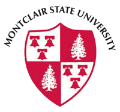 The B.F.A. in Animation/Illustration covers the foundations of not just 2D and 3D animation but also figure drawing, color, lighting, and other areas of using animation as a storytelling medium.
The B.F.A. in Animation/Illustration covers the foundations of not just 2D and 3D animation but also figure drawing, color, lighting, and other areas of using animation as a storytelling medium.
What Makes It Great
Industry-Relevant Curriculum: The program offers an immersive experience using professional tools and processes. Students are trained to produce professional-quality 3D characters, environments, props, animations, simulated effects, and composites suitable for live-action films, television, video games, and interactive media.
Hands-On Approach: The BFA degree emphasizes practical learning. Students are not just taught the theory but are provided with intensive hands-on courses of study, ensuring they are well-prepared for real-world challenges in the animation and visual effects industry.
Interdisciplinary Collaboration: Being a part of The School of Communication and Media, students have the unique opportunity to collaborate across different programs. This interdisciplinary approach fosters creativity, innovation, and a broader understanding of the media landscape.
Ball State University
 BSU prides itself on providing both undergraduate and graduate programs in 2D animation, 3D animation, product design, and animation degrees – or as they call them, illustration degrees.
BSU prides itself on providing both undergraduate and graduate programs in 2D animation, 3D animation, product design, and animation degrees – or as they call them, illustration degrees.
Their Illustration Degree specializes in offering students the ability to branch out into Illustration Design, Surface Design, Motion Design, Entertainment Arts, and more.
What Makes It Great
Diverse Animation Techniques: Ball State offers a comprehensive digital animation experience that delves into various forms, including 3-D animation, stop-motion, and traditional 2-D animation, ensuring students gain a well-rounded skill set.
Hands-on Experience with Leading Software: Students gain valuable experience with leading animation industry software such as Toon Boom, Maya, Photoshop, and Adobe Illustrator. This practical knowledge ensures they are job-ready upon graduation.
Career Versatility: Due to the depth of their training, graduates are equipped for a wide range of opportunities, from 3D animators in the film industry to multimedia artists, storyboard artists, and even 3D modelers for sectors like entertainment, advertising, engineering, and medicine.
10 Amazing International Animation Schools
Vancouver Film School
 VFS has a number of excellent one-year programs to learn 3D animation as a path toward a career as an animator. The best one is the 3D Animation & Visual Effects program, but the Foundation Visual Art + Design path is also worth recommending.
VFS has a number of excellent one-year programs to learn 3D animation as a path toward a career as an animator. The best one is the 3D Animation & Visual Effects program, but the Foundation Visual Art + Design path is also worth recommending.
Sheridan College
![]() Sheridan’s Bachelor of 3D animation degree will leave you with a solid understanding of not just 3D computer animation but also the fundamentals of 2D movement, performance, and expression.
Sheridan’s Bachelor of 3D animation degree will leave you with a solid understanding of not just 3D computer animation but also the fundamentals of 2D movement, performance, and expression.
You’ll also take courses in other areas such as storyboarding and scriptwriting.
Bournemouth University
 You have a choice of four different programs at BU that can lead you to a career in animation. These are – a B.A. in Computer Visualization and Animation; a B.S. in Software Development for Animation, Games, and Effects; A B.S. in Game Technology; B.A. in Computer Animation Arts.
You have a choice of four different programs at BU that can lead you to a career in animation. These are – a B.A. in Computer Visualization and Animation; a B.S. in Software Development for Animation, Games, and Effects; A B.S. in Game Technology; B.A. in Computer Animation Arts.
Nanyang Technological University
![]() With the Art, Design & Media program, you’ll cover several areas useful to a professional animator. In four years you’ll cover everything from Digital Animation, Digital Filmmaking, Interactive Media, Product Design, Visual Communication, Photography & Digital Imaging.
With the Art, Design & Media program, you’ll cover several areas useful to a professional animator. In four years you’ll cover everything from Digital Animation, Digital Filmmaking, Interactive Media, Product Design, Visual Communication, Photography & Digital Imaging.
Royal College Of Art (United Kingdom)
 RCA offers you a learning and teaching environment designed to help you develop your creative and technical skills to become a good animator. You’ll also take courses covering scriptwriting, storytelling, improvisation, and more.
RCA offers you a learning and teaching environment designed to help you develop your creative and technical skills to become a good animator. You’ll also take courses covering scriptwriting, storytelling, improvisation, and more.
HKU University of the Arts Utrecht
 Bachelor of Design At HKU University offers you a number of different paths in design and media to choose from. They include Animation, Fashion Design, Audiovisual, Media, Illustration, Graphic Design, and Image and Media Technology, Product Design, and Spatial Design.
Bachelor of Design At HKU University offers you a number of different paths in design and media to choose from. They include Animation, Fashion Design, Audiovisual, Media, Illustration, Graphic Design, and Image and Media Technology, Product Design, and Spatial Design.
Royal Melbourne Institute of Technology
 RMIT’s B.D. in Animation and Interactive Media is the best choice if you want to receive a solid education in 2D animation, 3D animation, motion graphics, special effects, and interactive media.
RMIT’s B.D. in Animation and Interactive Media is the best choice if you want to receive a solid education in 2D animation, 3D animation, motion graphics, special effects, and interactive media.
There are also two Master’s degrees and one Graduate Diploma in Animation, Games, and Interactivity.
University of Technology Sydney
 The B.D. in Animation is perfect if you want to translate your passion for drawing, storytelling, and visual art into a career in animation. There is also a post-graduate Master of Animation program to further your studies.
The B.D. in Animation is perfect if you want to translate your passion for drawing, storytelling, and visual art into a career in animation. There is also a post-graduate Master of Animation program to further your studies.
Teesside University (England)
 Teesside University has three excellent programs if you’re determined to serve as an animator for a living. These are – a B.A. in Computer Games Animation; B.A. in Computer Character Animation; and a one-year M.A. in Concept Art for Games and Animation.
Teesside University has three excellent programs if you’re determined to serve as an animator for a living. These are – a B.A. in Computer Games Animation; B.A. in Computer Character Animation; and a one-year M.A. in Concept Art for Games and Animation.
Beijing Film Academy (China)
 The BFA’s Animation School has been preparing the next great animation directors and animation producers since 2000. You’ll be trained by an experienced teaching team and have the opportunity to take part in several animation film festivals in the city.
The BFA’s Animation School has been preparing the next great animation directors and animation producers since 2000. You’ll be trained by an experienced teaching team and have the opportunity to take part in several animation film festivals in the city.
The Animation Career Outline
Professional animators and graphic artists are at the forefront of a thriving digital industry that continues to grow.
Despite outsourcing minor animation projects, the U.S. Bureau of Labor Statistics has predicted a 6% increase in the field of animation, graphics, and media design over the next few years.
Too Many Options?
Careers in animation are as diverse and varied as the training programs available to those looking to learn.
Regardless of your background, age, or financial situation, there are many high-quality animation schools available to choose from.
Your Animation Skills Set The Stage
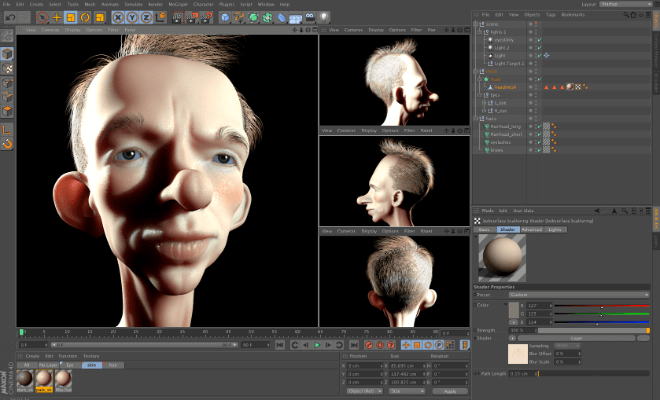
Many (but not all) of today’s top animators started out with some natural talent. Typically memorable illustration skills, superior storytelling abilities, and a natural inclination towards the art.
Bob Godfrey, one of the most talented illustrators to ever grace the field of animation, has spoken often of his passion for bringing his drawings to life.
In one interview, part of what he believed animation to be was summed up, in part, when he said,
“…We want limitations; we want gravity. Basically, there is no gravity in animation. Animation is free, it can fly, and it can go anywhere. I don’t think enough people realize this, they’re too earth bound. It’s not earth bound, it’s fantasy.
You’ve got to have a very whimsical mind for animation, I think; you’ve got to be able to take off and be not of this world.”
It is this passion and drive that brings many to the industry.
Searching for Animation Classes
In order to gain access to the world of animation, you have to pursue an education to learn 2D animation and 3D animation.
The ability to create realistic animation has grown exponentially, with new techniques and computer software continually improving.
Depending on where you live, you can explore the many 3D animation degree offerings and degree tracks to place you where you would like to be in the field.
Typical Animation Courses List
Generally speaking, there are four broad categories of animation training.
- Certification(s)
- Associate Degree(s)
- Bachelor Degree(s)
- Master Degree(s)
Also worth noting:
- The US doesn’t currently offer a Doctoral Degree in Animation.
- Self-study via books and 2D animation schools online are also gaining in popularity.
In addition to selecting the level of education you desire, choosing the right focus can be even more important.
Common focus areas of animation:
- Animated advertising
- Movies and television
- Video game testing and development
- Education
While these categories are not exclusive, they paint the choices with a broad brush for those wishing to narrow down their field of interest.
It May Seem Overwhelming at First
Just as there are many different jobs in the animation industry, there are a myriad of choices available for your training.
There are schools devoted entirely to the pursuit of graphic design and animation as well as universities adding comprehensive degree tracks in media arts, animation, and graphic design.
How to Choose the Right Animation School
Training ranges from the certificate level, where you can train in the core basics and give you enough of an introduction to the field, from cartoon courses all the way to the best 3D animation schools in the world, which can find you teaching in a university or working on the next major animated film.
Level 1: The Animation Certification
There are several schools throughout the country that offer programs that provide a certificate after your training is complete.
These courses provide core basics in the animation field and usually require approximately 17-18 credits.
You can expect to take classes such as:
- 2D animation
- 3D modeling
- Graphic design
- And additional similar courses
These certificates can offer you a glimpse into the complex world of digital media, animation, and graphic design.
You can take a certificate course to enhance an already existing degree or to freshen up your skills that might be outdated with emerging and improving technologies.
Level 2: The 3D Animation Associate Degree
Progressing to the next level of education available in the animation field, we arrive at the Associate Degree.
This typically two-year program adds in not just core classes, but other prerequisite courses at the college level that result in a more well-rounded education.
The animation classes that you will take during the pursuit of this degree can vary.
Some schools offer multiple tracks for degree completion that may result in Applied Science or Arts degrees in:
- Multimedia
- Graphic design
- Game design
- Animation specialties
Career Options
Graduates from these types of programs can expect to obtain entry-level employment in animation studios, advertising companies, design firms, and other creative artist positions.
As this article points out, just one generation ago, all animation was done by hand. Delving into the history of animation, you discover the incredible talents of those who worked animation magic with pen and paper.
Level 3: The Bachelor Degree
The exponential growth of the industry has led to an equal rise in educational requirements for those at the top of the field.
For this reason, there are a ton of Bachelor Degrees in Animation available for serious aspiring animators.
When enrolling in a Bachelor of Animation Class or training program you can expect to learn the core skills of animation, the software, and tools used by pros, as well as a specialty to focus on for your career.
The Most Popular Bachelor’s Degree Programs Include:
- CalArts
- USC
Level 4: The Master Degree
At the pinnacle of animation, education sits the Master’s Degree in Fine Arts with a concentration in Animation, Design, and Production.
These degrees are not as widely offered as certificates, associate, and bachelor degrees.
Individuals who take their education to the top with an M.F.A are usually seeking higher-level positions in the industry, such as:
- Producer
- Creator
- Project Director
- Studio Executive
This advanced degree also adds in unique components (not usually found in less intense degrees) such as:
- Management
- Production Skills
- Logistics
- Finance
Entry Requirements for An Animation Master Degree
In order to gain admittance to these selective programs, one must already possess a valid Bachelor’s Degree in an Animation field and compete for a place in the program.
Upon completion, one can expect to gain a more lucrative position in the field. Some individuals obtain this degree in order to teach at these prestigious CGI schools and transfer their knowledge to up-and-coming animators.
Also worth noting
To set the record straight, there aren’t any Doctoral degrees in animation currently available in the U.S.
If your passion extends to the height of wanting to pursue your Doctorate degree in Animation, you will have to look outside the US to find a suitable program.
Most people who pursue a degree in digital arts at this level are often seeking to teach at universities or work at the highest level of the industry. This degree is extremely rare and takes years to complete.
How to Pay for School
The cost for animation colleges can vary greatly depending on several factors.
Community colleges tend to have great in-state rates for students and can be a very affordable option to start out with.
Private computer animation degree programs often cost more. However, they are also accredited schools that are eligible for funds like student loans, scholarships, and grants.
Don’t forget to consider the state and economic status of the animation academies. If you are looking to attend a brick-and-mortar animation school, you will need to not only seek out information about the cost of the education program, but the cost of living for housing, food, and other necessities needs to be factored in.
If you are taking all of your courses online, you will need to add in additional costs as well.
Will you need to take workshops or participate in internships in order to complete your 3D animation degree? While you may save on program costs, factoring in these additional fees is important too.
Speak to an Advisor
Once you have narrowed down your animation school and program selections, taking the time to speak to an advisor is a crucial step in the process.
They can answer vital questions that will help you avoid signing up for courses you don’t need or guide you toward a course track that will point you in the direction of the career you seek.
Advisors can also help you figure out the often complicated world of financial aid and get you on the right track.
Animation Scholarships
In addition to traditional funding, there are scholarships that are specifically geared toward students pursuing an education in the animation field.
Many of them require that you submit portfolios and other forms of completed work.
You will find that the requirements vary for each scholarship, as is normally the case with most targeted awards.
Some scholarships are available for women pursuing a computer animation degree, while another may target an individual coming from a disadvantaged background.
A different scholarship may require that you maintain a certain G.P.A. in order to apply. If you take the time to do some research on these programs, you may be able to fund a portion of your tuition costs.
Check out some of the scholarship and grant opportunities available:
- https://www.scholarships.com/financial-aid/college-scholarships/scholarships-by-major/art-scholarships/
- https://www.nyfa.edu/federal-financial-aid/scholarships-grants.php
- https://calarts.edu/financial-aid/grants-and-scholarships/private-scholarships
Let’s Compare Notes
We want to hear from you. To ask a question about this article or to provide additional information, shoot us a message at: [email protected]
Written by Dustin Tyler [Updated March 1, 2025]
 Initially focused on web dev, Dustin was introduced to game design by a friend after college and was immediately attracted to the combination of technical skill and creativity required to make an awesome game.
Initially focused on web dev, Dustin was introduced to game design by a friend after college and was immediately attracted to the combination of technical skill and creativity required to make an awesome game.
While not a professional game developer himself, he’s utilized his web dev skills and desire to help others by creating a resource where expert game designers can share what they’ve learned with the next generation of aspiring game makers.

Thank you so much for your informative articles!
My son is in the midst of deciding which college is best for him. He’s been admitted to Parsons and Pratt, both with significant merit scholarship. He loves creating art, and has expressed that he would like to work in “game environments/animation/storytelling/Character design”.
What are your thoughts with regards to Parsons v’s Pratt?
Thank you!